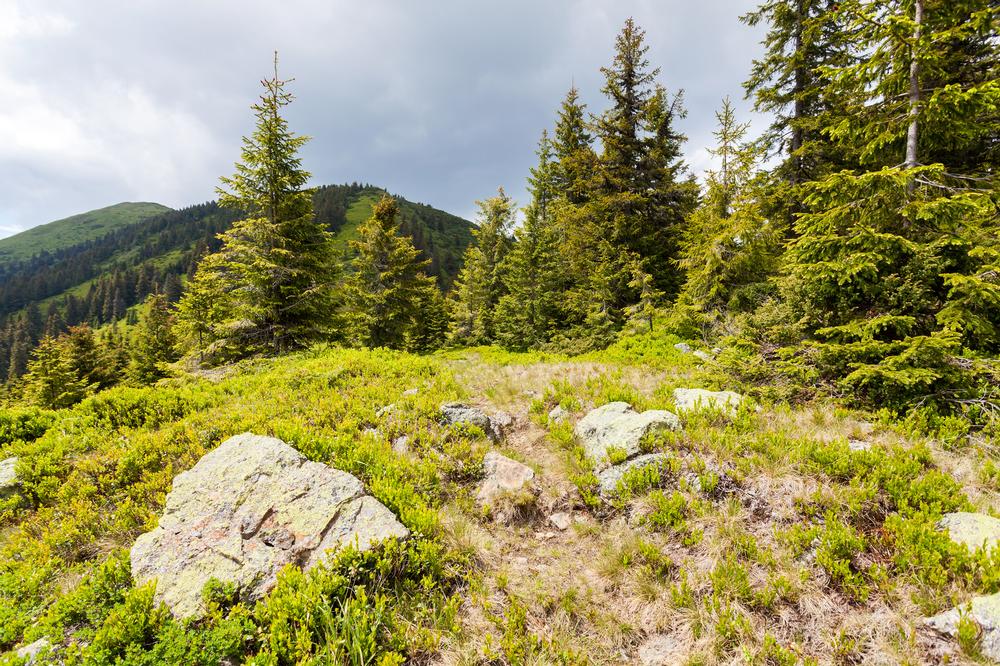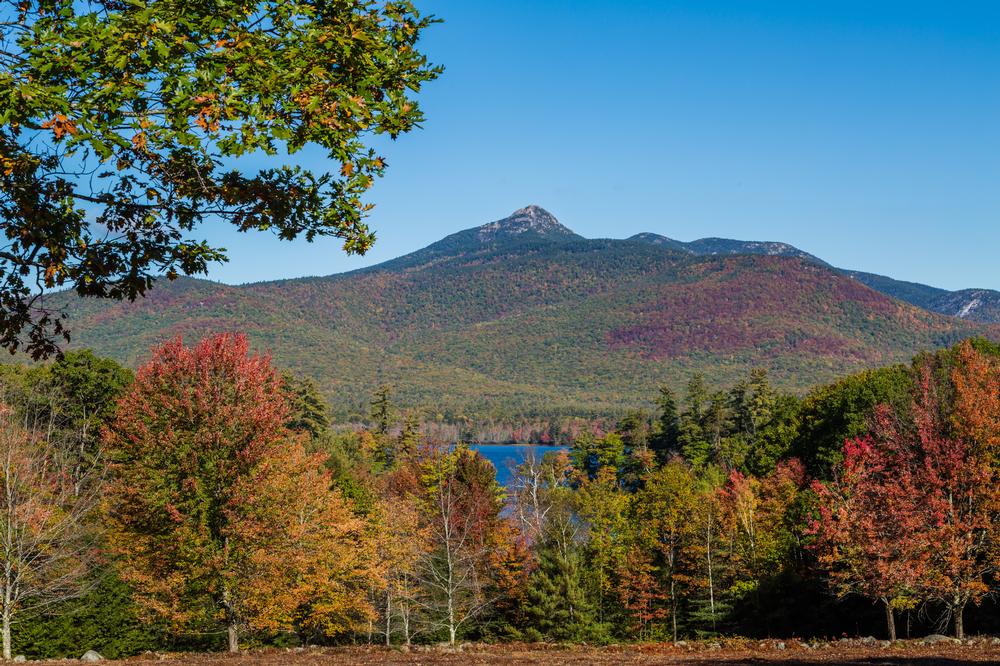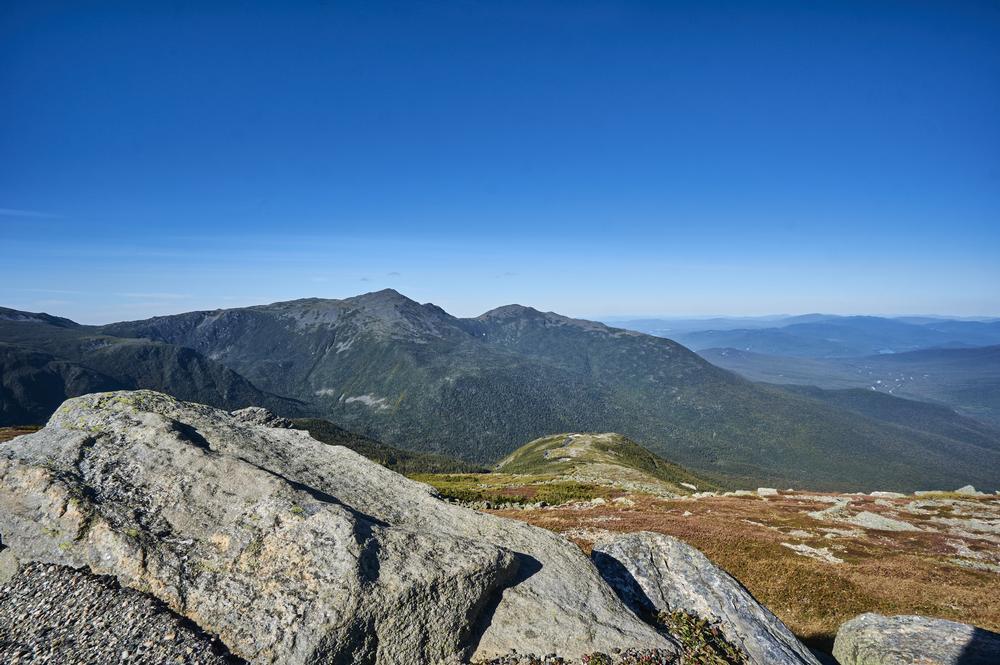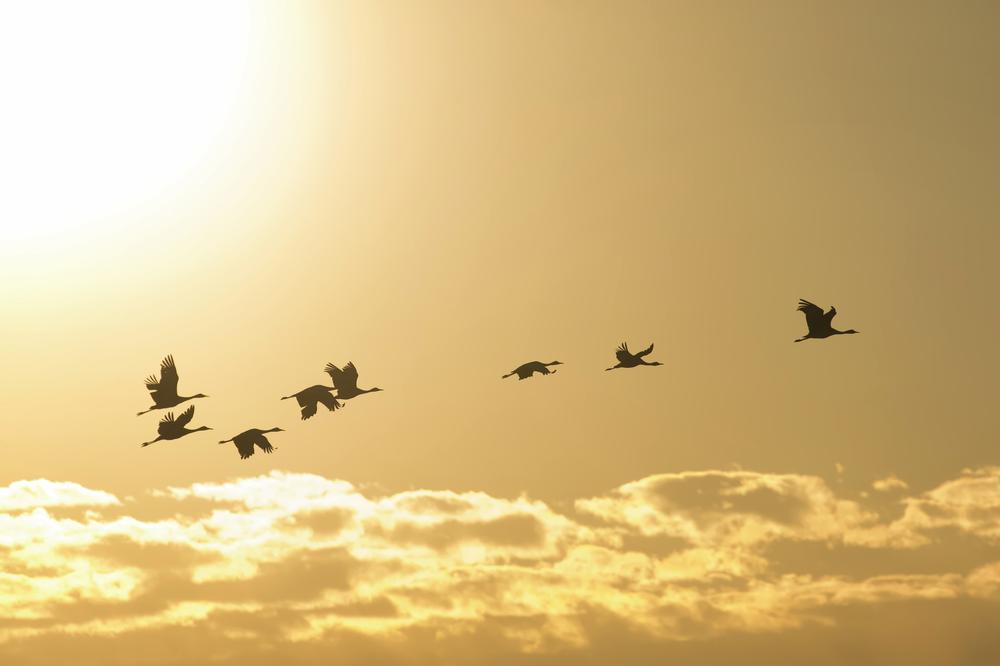In This Article
Ready to explore New Hampshire’s rugged beauty? These iconic mountains in New Hampshire offer scenic hikes, panoramic vistas, and year-round outdoor adventures in the heart of the White Mountains.
If you are in a hurry, I recommend:
- Mount Washington – Northeast’s tallest peak with the famous Auto Road, cog railway, and epic summit views
- Mount Lafayette – Popular Franconia Ridge hike offering alpine scenery and breathtaking ridgeline trails
- Mount Monadnock – Classic family-friendly climb known for its summit views and accessibility
- Mount Chocorua – Iconic, photo-worthy peak with scenic trails and lake reflections
- Mount Moosilauke – Less crowded gem with sweeping vistas and Appalachian Trail access
For Avid Hikers
1. Lion Head

© Courtesy of Eurico - Fotolia.com
Lion Head is the 5,091-foot-high peak on the eastern slope of Mount Washington between the two glacial cirques: Tuckerman Ravine and Huntington Ravine. The best spot to see the Lion Head is from the Tuckerman Ravine. It stands proud against the sky above the entire Hermit Lake area. The Tuckerman Ravine Trail, which runs below Lion Head, is the most popular and the most busy. The Lion Head Trail crosses the steep slopes of the mountain before arriving at the Tuckerman Ravine bowl. From there it climbs sharply up Lion Head itself. This trail is also the most popular, and the safest, trail to the summit of Mount Washington in the winter. The summit lies just above the tree line and is exposed and wide, covered in wild flowers in the summer and offering fantastic views of the surrounding peaks on a clear day.
2. Mount Success

© Courtesy of iava777 - Fotolia.com
Mount Success is a massive mountain in the rugged Mahoosuc Range with two open, broad glacier-scoured granite summits with dwarf evergreens and blueberries growing from cracks in the rock. The northern summit is higher at 3,565 feet and the southern at 3,364 feet is shorter, but offers better views. The lower slopes are covered in a typical Mahoosuc boreal forest of dense fir and spruce mixed with deciduous trees. Mount Success is the first summit in New Hampshire that people hiking the Appalachian Trail reach as well as the first real Mahoosuc summit. It is difficult to hike Mount Success in a day hike and you need a few days to cross the whole range. Take the Appalachian Trail if coming from the north and the trail to Gentian Pond if coming from the south. The main summit is about 2.8 miles from Gentian Pond.
3. Mount Chocorua

© Courtesy of straystone - Fotolia.com
Mount Chocorua, about 12 km from Conway, is one of the most popular mountains in New Hampshire’s massive White Mountains, both with hikers and climbers. During the summer, it is a fairly short hike to the scenic, treeless mountain summit, and in the winter it offers a mild taste of climbing above the tree line in the White Mountains. The 3,475-foot-high peak is a cone of bare, steep, exposed rock slab and it has footholds blasted by dynamite to facilitate climbing. Nevertheless, it is very popular and so visitors should not expect a solitary hike, even in winter. The trailhead to Piper Trail, the most popular trail, is behind the Chocorua Store just off Route 16.
For Backpackers
4. Mount Kearsarge North

© Courtesy of deemwave - Fotolia.com
Mount Kearsarge North in the Mount Washington Valley is a popular and fairly easy hike, even for families. It is located close to North Conway and its summit offers fantastic views of the Presidentials, Mount Washington Valley, and the Maine interior. One of the interesting features on the mountain is the historical wooden fire tower, which hikers love to climb. A moderately fit hiker can do Mount Kearsarge in little more than 3 hours. Like many trails in the White Mountains, the trail starts to climb gradually, getting steeper and rockier as it goes up. It continues moderately steep with no scrambling sections. While the trail is open enough on the way up to offer some views, nothing can be compared with the breathtaking vista from the summit.
5. South Baldface

© Courtesy of Tom - Fotolia.com
The two Baldface Mountain peaks – North Baldface at 3,566 feet and South Baldface at 3,556 feet – are often overlooked by hikers chasing more popular peaks that are over 4,000 feet. But what makes them so attractive is the fact that a big part of Baldface is above the tree line, which means that the ridge loop provides hikers with almost continuous views in all directions, in particular a spectacular view of Mount Washington as it looms above the Carter Range. The barren eastern spur of South Baldface has an interesting, often slippery, section with ledges, but after you pass the spur, you will climb the summit and all of a sudden there is Mount Washington in front of you in all its glory. North Baldface is a bit higher, but the views of Mount Washington are obstructed by the Carter Range. Also, the trails are less challenging. The main trail to both peaks is the Baldface Circle Trail.
For Nature Photographers
6. Mount Crawford

© Courtesy of elrepho - Fotolia.com
Mount Crawford is a 3,119-foot-high mountain in the Bemis Ridge, sharing it with the lesser known Mount Hope and Hart Ledge. It is the first peak you reach when hiking up the historic Davis Path. The trail to the summit was built as a bridle path to make the grades easy to moderate all the way to Mount Washington, which is about 15 miles from the trailhead. The trail to Mount Crawford is an easy 5-mile hike with a 2,100-foot elevation gain, and the views of Crawford Notch and the Presidential Range that open up at the summit are fantastic.??
7. North Peak Kinsman Mountain

© Courtesy of schankz - Fotolia.com
North Kinsman is one of the two mountain peaks on Kinsman Mountain near the Franconia Ridge, a bit lower than the south peak but with much better eastern view of the ridge. The summit of North Kinsman looms high over Kinsman Pond and, from the ledge of the summit, the views of the pond down below are great. If you are coming up from the east, you will pass popular Lonesome Lake, another spot with beautiful views of the area and both Kinsman peaks. Hikers normally combine the two peaks in a day hike. Many of the trails to the North Peak Kinsman Mountain are rocky and even have to be scrambled in some parts. Some are pure rock and have almost no soil, so expect to have to use your hands to pull yourself up.
8. Moat Mountain

© Courtesy of littleny - Fotolia.com
North Moat Mountain is located in Carroll County, New Hampshire, and is one of the less popular White Mountains peaks. Its rocky summit is 3,196 feet high and has a number of wide ledges and clear views all around. The Moat Mountain Loop Trail that starts at the Diana’s Baths parking area in North Conway is about 10 miles long and gains about 2,800 feet in elevation. The bare rocky summit will surprise you in the summer with a huge number of wild blueberry bushes. You will have to climb some rock walls, but nothing that fit beginner hikers cannot do, so the hike is considered moderately challenging.
9. Bondcliff

© Courtesy of elrepho - Fotolia.com
Bondcliff is a 4,265-foot mountain in the Pemigewasset Wilderness of New Hampshire’s White Mountains. It is located north of the Kancamagus Highway, south of Route 302 and east of I-93. Hiking Bondcliff is great for those who are looking for solitude. It is moderately strenuous with a few rugged sections. There is a short, difficult section before you come to the wide open summit area, where you can finally enjoy beautiful unobstructed 360-degree views of the whole area. It is a fairly long track from the highway, so the hike is not popular with day hikers, providing that wonderful sense of solitude.
10. Bald Mountain (Antrim/Hancock)
_59775.jpg)
© Courtesy of FotoIdee - Fotolia.com
Bald Mountain (Antrim/Hancock) is a 2,037-foot-high mountain in the Monadnock Region in the dePierrefeu-Willard Pond Wildlife Sanctuary, with the beautiful Willard Pond on its east side. The mountain offers great hiking, with some trails passing along the pond. From the summit, the view of Mount Monadnock, the Wapack Range, and other surrounding mountains is spectacular. One of the most popular is the combined 2.2-mile-long Tamposi/Bald Mountain/Tudor loop trail with 900 feet elevation gain with a mix of gradual and steeper sections, but nothing major that would require any scrambling. Since this mountain is not very popular, you might be able to enjoy it in pleasant solitude.
📔 I get asked this a lot so I decided to include it:
-
Q: What is unique about New Hampshire’s landscape?
- A: New Hampshire is covered in large expanses of untouched wilderness, making it a paradise for nature lovers and outdoor enthusiasts.
-
Q: What mountain range covers a significant portion of New Hampshire?
- A: The White Mountains in the north cover more than a quarter of the state, and most of New Hampshire’s 48 peaks over 4,000 feet high are in this region.
-
Q: What is the highest peak in New Hampshire?
- A: Mount Washington is the highest peak in the region and is a popular and challenging hiking destination.
Plan Your Trip












_59775.jpg)